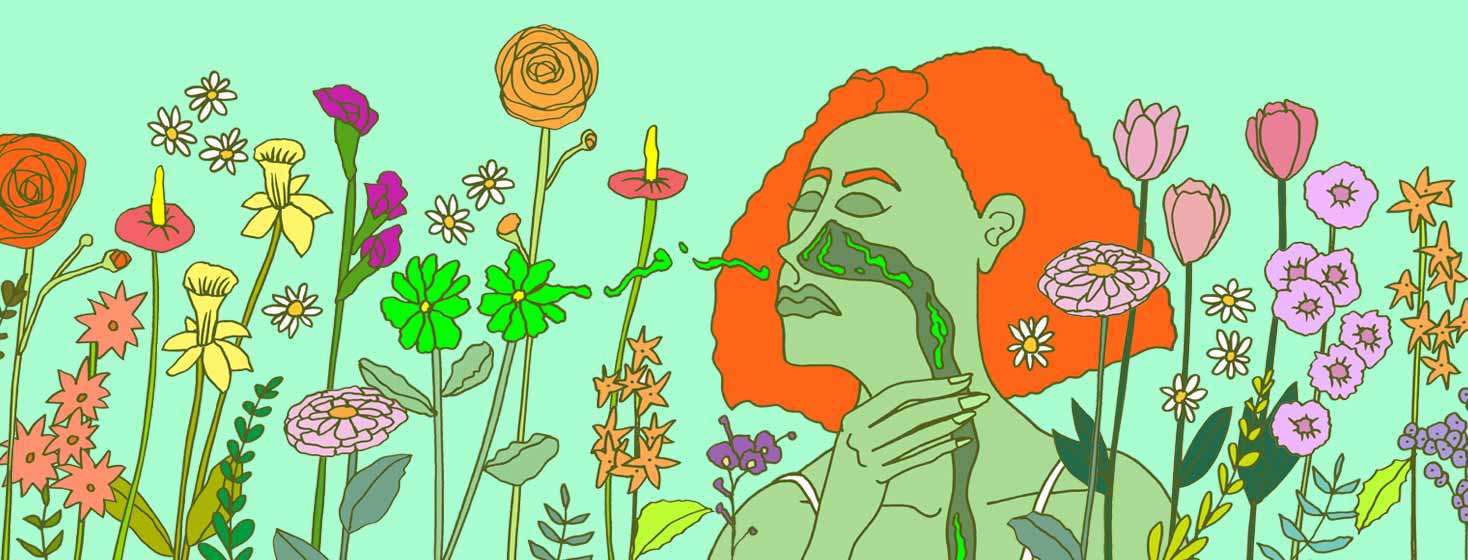Postnasal Drip and Asthma
As I write this article, the pollen count outside is at a high. Spring is now in full swing, and if you have allergic asthma, going outside right now might be challenging. Spring is a beautiful season of blooming flowers and greenery, but also the season of experiencing asthma flare-ups, a runny nose, itchy throat, and postnasal drip. If you have experienced postnasal drip before, you know it is one of the most annoying symptoms of having allergies!
What is postnasal drip?
Postnasal drip occurs when mucus from your sinuses drips down to the back of your throat. When mucus trickles down the back of your throat, it causes your throat to feel irritated. You may feel the need to constantly clear your throat, but not feel relief when you do so. It is likely that you also experience a constant cough and sore throat. Postnasal drip is a common diagnosis, and common amongst those with allergic asthma.1,2
Why do you experience it?
Postnasal drip frequently occurs when you are exposed to an allergen, such as pollen, dander, dust, etc. If there are potential triggers in the air, like air pollution, harsh cleaners, or strong perfumes, this could trigger it. Certain weather, like cold, dry winter air, can also be a cause. Sinus infections and viral infections are also culprits.1,2
Postnasal drip and asthma
Experiencing postnasal drip may worsen your asthma symptoms. It could potentially exacerbate your already existing asthma cough or wheeze. However, there is no evidence that suggests that postnasal drip causes asthma. It is a symptom that is commonly associated with asthma. As mentioned before, if you have allergic asthma, it is likely that you have experienced mucus dripping since this symptom is also closely linked to allergies.1,2
Treatment for postnasal drip and asthma
At-home remedies
Luckily, there are many at-home remedies that may provide relief from postnasal drip. The easiest method of thinning the mucus build up in the back of your throat is to stay hydrated. Drinking plenty of water will help thin the mucus. Warm liquids can be especially helpful for breaking up the mucus; try tea, coffee, warm water with honey, or broth.1,2
Taking a hot shower can also help open up your airways, but be mindful of this method because, for some, steam is a trigger for asthma. A humidifier can also be helpful for the same reason. Another simple at-home remedy is nasal irrigation; this method can assist in clearing mucus build-up in your nose and throat. You can practice this method by using a neti pot or using a saline nasal spray.1,2
Medicine
Avoiding allergens is the best way to avoid postnasal drip, but sometimes this is not possible. If you find that you are constantly exposed to what you're allergic to, you may need to turn to certain medicines or solutions. If you are sure your allergies are causing postnasal drip, allergy shots have the potential to help you gain control of your allergies, and therefore minimize the drip.1
Non-drowsy antihistamines and decongestants can also work to eliminate or reduce postnasal drip. If you find that none of these solutions are effective, you may need to get a prescription from your doctor for a nasal steroid spray. Pre-medicating before being exposed to allergens can be an important step in avoiding this very annoying symptom!1
Do you experience postnasal drip? If so, what do you do to avoid it or treat it?

Join the conversation